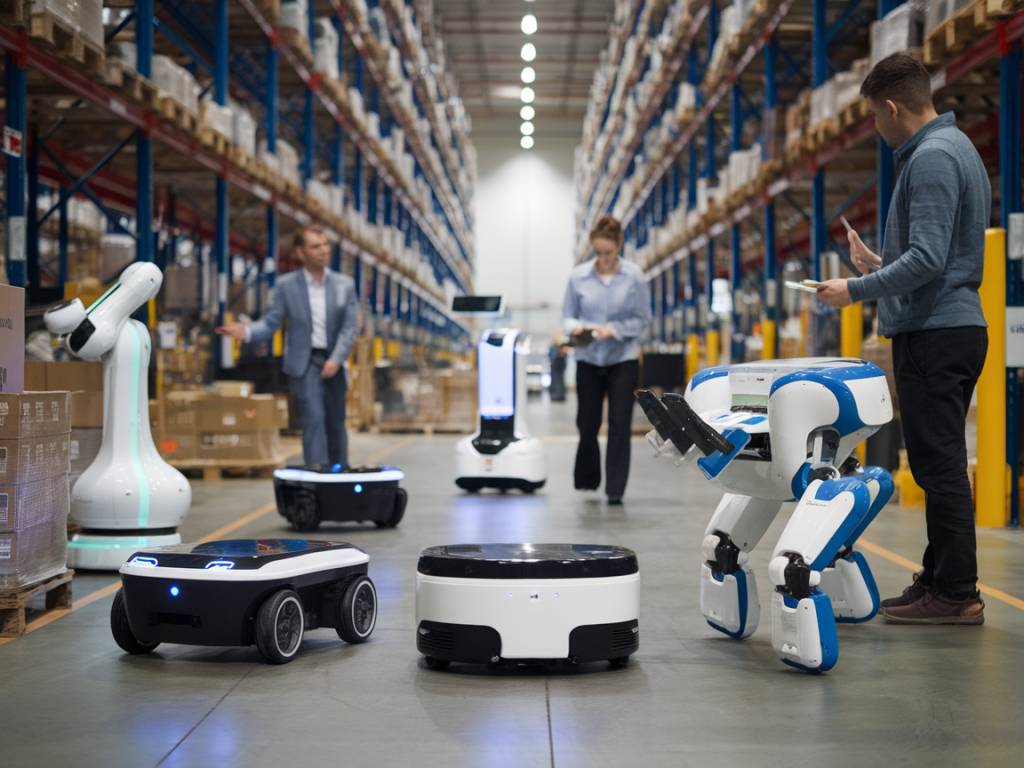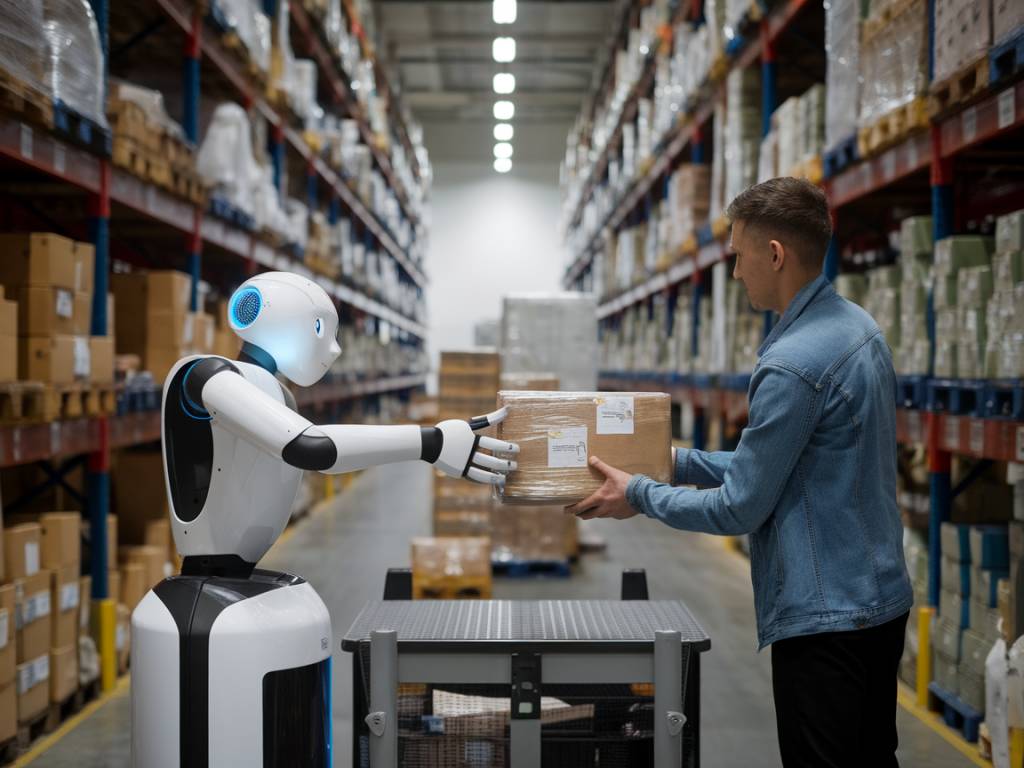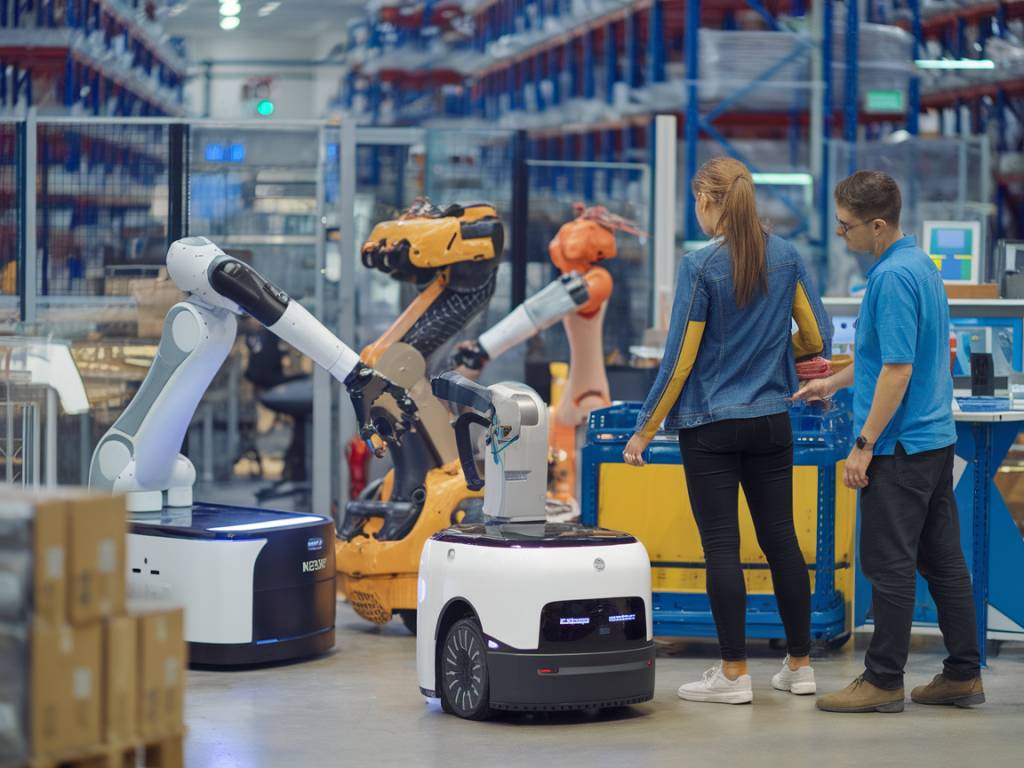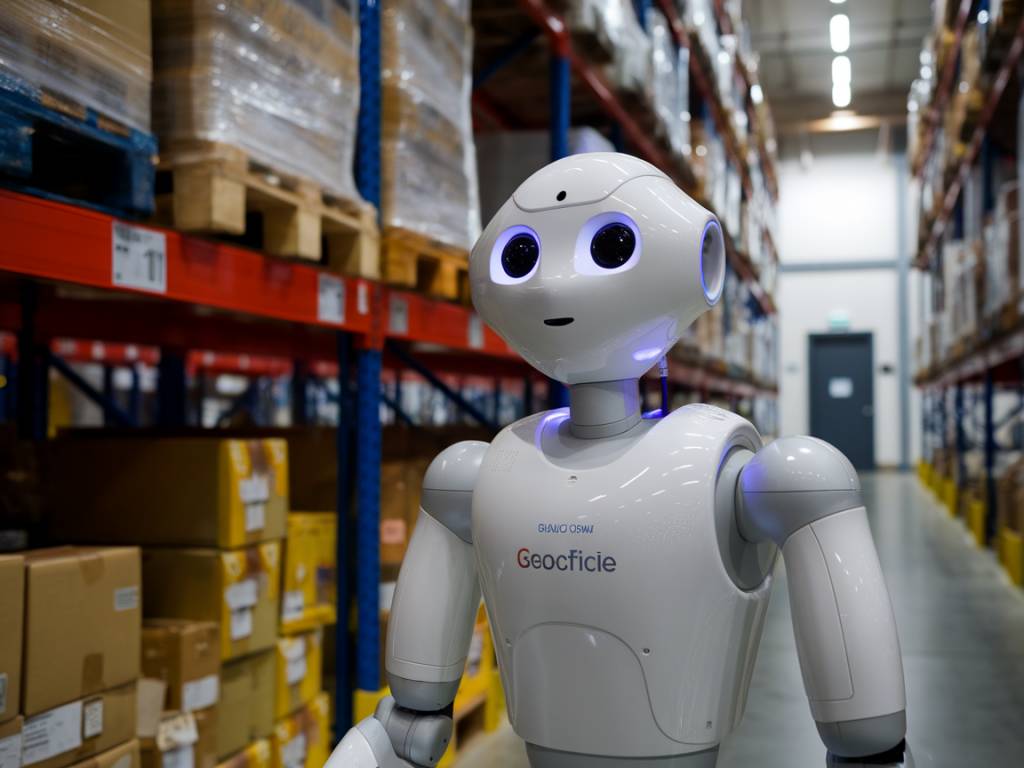
robots in warehousing: increasing efficiency and reducing human error
The integration of robots in warehousing has transformed the logistics landscape, offering increased efficiency and reducing human error. As businesses aim to streamline operations and enhance productivity, warehouse robotics provide viable solutions. This article explores the role of robots in the warehousing industry, their benefits, and their impact on the supply chain.
The Role of Robots in Warehousing
Robots in warehousing come in various forms and functionalities, tailored to meet the specific requirements of different operations. These robots are instrumental in performing repetitive tasks, handling heavy loads, and navigating through complex warehouse layouts. They play a crucial role in optimizing processes such as picking, packing, sorting, and transporting goods.
Some common types of warehouse robots include:
Increasing Efficiency in Warehousing Operations
The introduction of robots in warehousing significantly enhances operational efficiency. Here are some ways in which these robots contribute to improved efficiency:
Incorporating robots in warehousing also allows for better data collection and analysis. These robots are equipped with sensors and software that enable real-time tracking and monitoring of inventory levels, order status, and equipment performance, facilitating informed decision-making and predictive maintenance.
Reducing Human Error
Human error is a significant challenge in warehousing operations, often leading to costly mistakes, delays, and safety hazards. Robots help mitigate these risks by taking over tasks that are prone to human errors. Here’s how robots reduce human error:
Furthermore, robots are programmed to follow specific protocols and procedures, ensuring compliance with industry standards and regulations. This level of precision and adherence reduces the likelihood of errors and enhances the overall quality of warehouse operations.
The Impact on the Workforce
The adoption of robots in warehousing has sparked discussions about its impact on the workforce. While there are concerns about job displacement, it’s essential to note that robots are designed to complement human workers rather than replace them. Here are some key considerations:
Ultimately, the presence of robots in warehousing fosters a collaborative environment where human workers and robots work together to achieve operational excellence. Companies that embrace this synergy can benefit from a more motivated and skilled workforce.
Challenges and Considerations
Despite the numerous advantages, integrating robots in warehousing comes with its set of challenges and considerations. Businesses must address these factors to successfully implement robotic solutions:
Additionally, businesses must consider the potential impact on employee morale and address any concerns related to job security through clear communication and retraining programs. Ensuring a smooth transition to a robot-enhanced warehouse requires careful planning and stakeholder engagement.
Future Trends in Warehouse Robotics
The field of warehouse robotics is continually evolving, driven by advancements in technology and increasing demand for automation. Some emerging trends that are shaping the future of warehouse robotics include:
As these trends continue to develop, the role of robots in warehousing will expand, offering new possibilities for enhancing efficiency, reducing errors, and driving innovation in the logistics sector.
The integration of robots in warehousing represents a significant leap forward in logistics and supply chain management. By leveraging the capabilities of robots, businesses can achieve higher efficiency, reduce human error, and create safer and more productive work environments. As technology continues to advance, the potential for further innovations and improvements in warehouse robotics is vast, making it an exciting area to watch for professionals in the industry.

 Leveraging Digital Twin Technology to Optimize End-to-End Supply Chain Visibility
Leveraging Digital Twin Technology to Optimize End-to-End Supply Chain Visibility  Optimizing Cold Chain Logistics with Smart Packaging Solutions
Optimizing Cold Chain Logistics with Smart Packaging Solutions  The future of logistics: integrating AI with warehouse execution systems
The future of logistics: integrating AI with warehouse execution systems  Collaborative robots (cobots): enhancing human capabilities in logistics
Collaborative robots (cobots): enhancing human capabilities in logistics  Automation in distribution centers: the role of robotics in streamlining operations
Automation in distribution centers: the role of robotics in streamlining operations  How AI-powered robots are optimizing inventory management
How AI-powered robots are optimizing inventory management  Enhancing Packaging Sustainability Through Circular Economy Practices
Enhancing Packaging Sustainability Through Circular Economy Practices  Smart Packaging Technologies: Bridging the Gap Between Product Safety and Supply Chain Efficiency
Smart Packaging Technologies: Bridging the Gap Between Product Safety and Supply Chain Efficiency